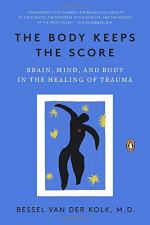
|
| Name: _________________________ | Period: ___________________ |
This quiz consists of 5 multiple choice and 5 short answer questions through Part Five: Paths to Recovery and Epilogue: Choices to Be Made.
Multiple Choice Questions
1. What is NOT an institution that often results in trauma survivors' needs being dismissed?
(a) Law.
(b) Family.
(c) Power.
(d) Economics.
2. What part of her client's body was the massage therapist holding when her client called out to see where she had gone?
(a) Her back.
(b) Her feet.
(c) Her head.
(d) Her neck.
3. What does the letter D stand for in EMDR?
(a) Decrease.
(b) Desensitization.
(c) Deficit.
(d) Denizen.
4. In what year did Van der Kolk convince a circuit court judge that memories of sexual abuse often remain inaccessible to victims for years?
(a) 2011.
(b) 1996.
(c) 1979.
(d) 2003.
5. What is the third option presented to an autonomic nervous system trying to navigate a dangerous situation?
(a) Fight or flight.
(b) Freeze or collapse.
(c) Social engagement.
(d) Neuroception.
Short Answer Questions
1. What sort of object did a group of veterans to whom Van der Kolk provided care give him for Christmas one year?
2. Yoga helps to reteach people how to notice which elements of their own experiences?
3. What term did the Southborough Report seek to abolish in the diagnoses of war veterans?
4. What kind of expression did Marilyn draw on all of the people in her family portrait?
5. At which institution of higher learning did Mary Main work when she and her colleagues coined the term "disorganized attachment" (116)?
|
This section contains 230 words (approx. 1 page at 300 words per page) |

|




